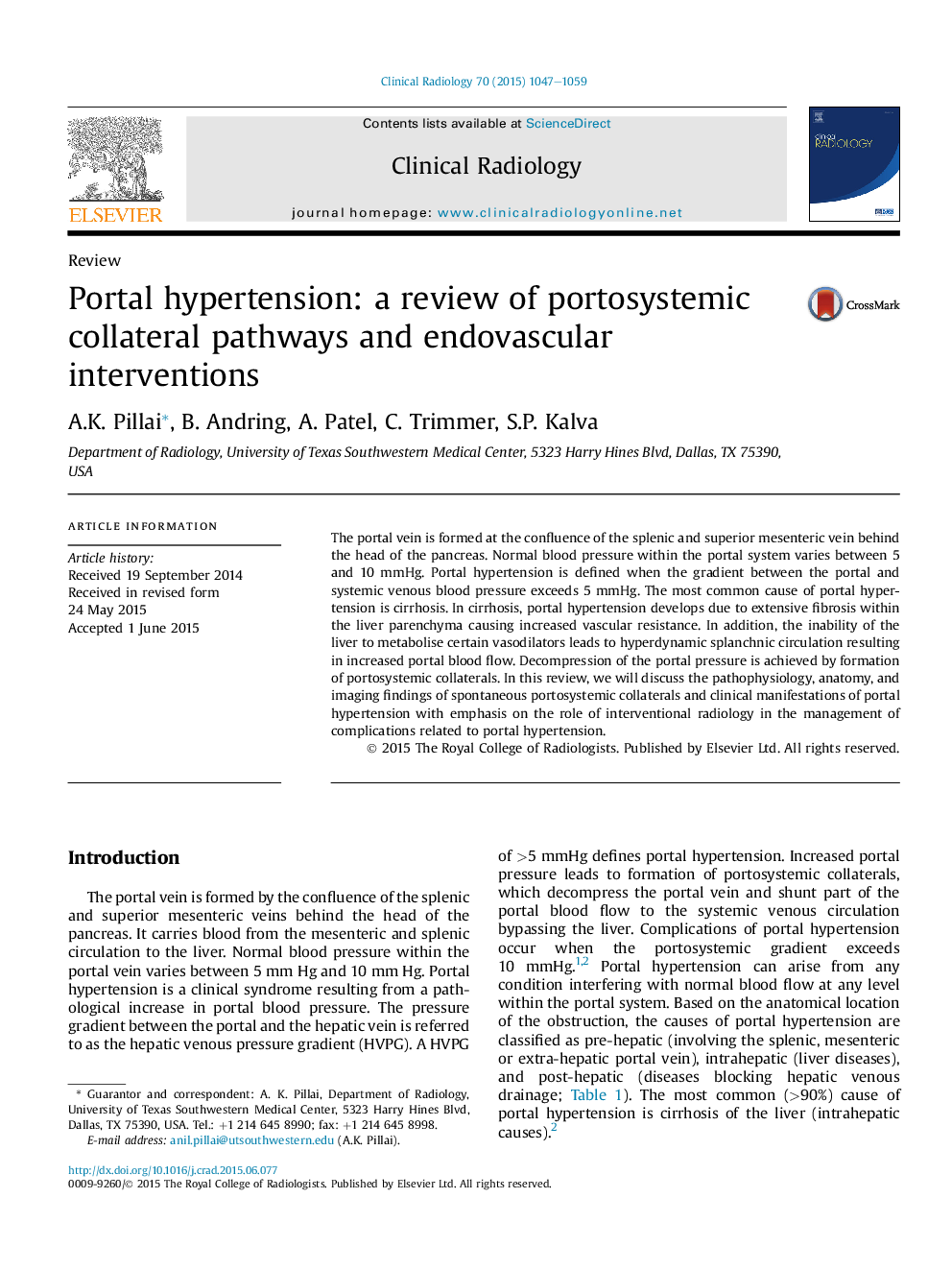| Article ID | Journal | Published Year | Pages | File Type |
|---|---|---|---|---|
| 3981498 | Clinical Radiology | 2015 | 13 Pages |
The portal vein is formed at the confluence of the splenic and superior mesenteric vein behind the head of the pancreas. Normal blood pressure within the portal system varies between 5 and 10 mmHg. Portal hypertension is defined when the gradient between the portal and systemic venous blood pressure exceeds 5 mmHg. The most common cause of portal hypertension is cirrhosis. In cirrhosis, portal hypertension develops due to extensive fibrosis within the liver parenchyma causing increased vascular resistance. In addition, the inability of the liver to metabolise certain vasodilators leads to hyperdynamic splanchnic circulation resulting in increased portal blood flow. Decompression of the portal pressure is achieved by formation of portosystemic collaterals. In this review, we will discuss the pathophysiology, anatomy, and imaging findings of spontaneous portosystemic collaterals and clinical manifestations of portal hypertension with emphasis on the role of interventional radiology in the management of complications related to portal hypertension.
